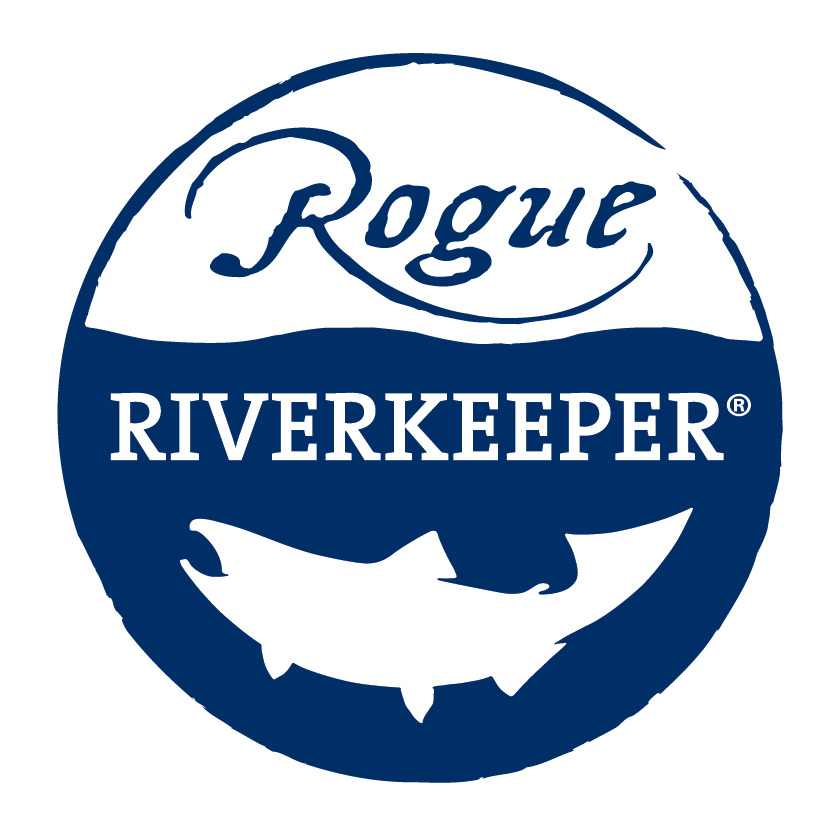The Long-Term Impacts from the Bear Creek Oil Spill Remain to be Seen
Following the initial spill event as a result of the fire at Pacific Pride gas station on April 12th, 2022, the Oregon Department of Environmental Quality (DEQ) Incident Response Team has diligently provided Rogue Riverkeeper with updates from their surface water quality testing in the aftermath and clean-up of the spill.
The most recent available results from the DEQ indicate:
No gasoline or diesel has been detected in Bear Creek as a result of the spill.
Visible sheen on Bear Creek has continued to decrease.
No VOC or PAH have been detected, suggesting that the original mix of lube oil and other petroleum products from the release has limited toxicity.
PCB and heavy metals analysis from earlier samples have not been detected or at preexisting concentrations.
So far there are no reports of dead fish, limited reports of oiled or struggling invertebrates or amphibians, but at least 20 clearly identified birds that were oiled. International Bird rescue captured 12 birds, and 6 of those remain alive and are in rehab. The Oregon Department of Fish and Wildlife, the U.S. Fish and Wildlife Service, and the International Bird Rescue believe the largest risk for wildlife was at the initial spill event and secondary oiling is unlikely.
The Rogue River has no visible sheen 1000 feet downstream of the Bear Creek confluence and there is no oil in the river requiring recovery.
Hard booms will remain in place in a few locations on Bear Creek for the foreseeable future but clean up operations have shown little to no recoverable oil and very little sheen in Bear Creek.
What are the long term impacts?
Oil spills can cause catastrophic damage to the environment and our economy. Exposed wildlife can face short-term and long-term impacts ranging from behavior modification, limited food availability, and hypothermia to organ damage, reduced reproduction, neurological deficits, and death. In addition, habitats affected by oil spills can take decades to recover. Impacts to fish can be severe, as short-term closures can limit access to fishing grounds and impacts from the spill make their way through the food web. Regions such as the Rogue River Basin whose economies rely on tourism and recreation are particularly vulnerable to river closures and long-term environmental damage. We received heavy rain at the same time and immediately following the oil spill, which helped dilute the pollutants and reduced the potential impacts of this spill to Bear Creek.
How did oil get into Bear Creek and how can we prevent this in the future?
The oil released from the Pacific Pride gas station fire traveled to Bear Creek via the Medford stormwater system. The curb, parking lot, and gutter drains you see while traveling around town are designed to deliver water from rain and urban run-off to Bear Creek. This type of stormwater management was designed and constructed many decades ago with the purpose of moving stormwater off of paved areas and other impervious surfaces to prevent flooding and pooling of water during storm events. Older municipalities, such as Portland, combine their stormwater with their sanitary sewer system, but Medford's stormwater system functions separately from the sanitary sewer. While separating the sanitary sewer and stormwater systems was a big advance at the time, the stormwater system can no longer keep pace with the amount of impervious surfaces in our urbanized landscapes and the most recently revised Clean Water Act stormwater permit for the City of Medford (and other local jurisdictions) requires that all new development (and redevelopment) not connect directly to the creek without going through some type of stormwater management facility to to improve water quality. While the new regulations improve stormwater management for new and redeveloped sites, it leaves out older infrastructure like the Bear Creek outfall that was the source of contamination to Bear Creek during the Pacific Pride fire. In this case, the stormwater system functioned as it was designed to and the stormwater run-off with the oil traveled straight to the creek from the original spill location.


